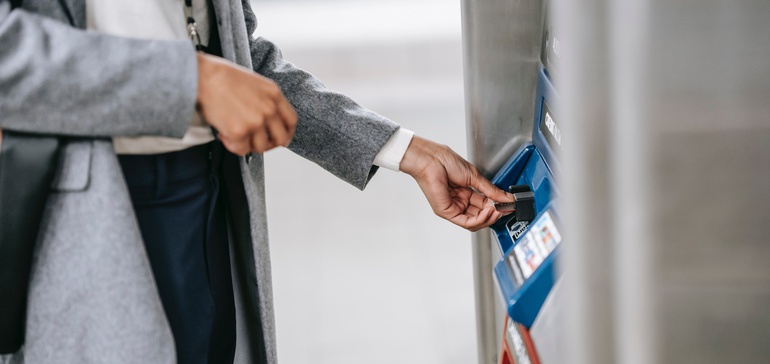Retrieved from Ono Kosuki from Pexels.
Lynne Marek|
Dive Brief:
- The availability of ATMs may have peaked at 470,000 units scattered across the U.S. in 2019, with a fall-off since then to 462,000 in 2020 and an estimated 456,000 last year, a spokesperson for research firm Euromonitor International said in updating its report on financial cards and payments in the U.S. Kendrick Sands, Euromonitor’s head of Consumer Finance Research, expects that downward trend to continue.
- The automated tellers are disappearing in tandem with banks closing local branches. The banking strategy pivot comes as digital banking and payment alternatives become more widespread.
- Reduced demand for cash globally is raising costs for servicing the machines, “prompting banks to review ATM footprints,” according to consulting firm McKinsey’s annual global payments report from October.
Dive Insight:
Between 2015 and 2019, ATMs kept popping up across the U.S., rising 8% from 434,000 to 470,000 machines during that period, according to Euromonitor. But now a confluence of consumer behavior changes are curtailing the appeal of the automatic cash dispensers once seen as revolutionary in the 20th century.
“It’s going to be a gradual drop for the next decade as cash” is used less, Sands said in an interview. He attributed the demise of ATMs to their lack of appeal for a younger generation that is gravitating to digital platforms and that is less loyal to particular banking institutions.
“They realize that convenience and security” of the digital tools, he said. “Once consumers realize that, it’s hard for them to go back.”
The consumer shift away from brick-and-mortar banking facilities has dovetailed with a waning desire for cash in recent years. The deadly COVID-19 contagion accelerated the trends, prompting consumers to opt for contactless alternatives, Sands said.
While some U.S. policymakers are advocating for the preservation of cash as a form of payment, particularly to safeguard parts of the population that don’t have access to alternatives, its use is likely to keep dropping.
The rate of decline will be about 6% annually through at least 2025, according to McKinsey’s third-quarter U.S. Payments Map report last year. Meanwhile, the rise in digital wallets with embedded credit cards, prepaid debit cards and automated clearing house transfers will continue, the consulting firm said.
Such changes are making ATMs less cost-efficient for banks. “The reduction in cash demand is leading to increasing (ATM) unit servicing costs for its distribution and collection,” according to the October report from McKinsey.
As a result, banks worldwide are sharing ATMs and others are outsourcing the servicing of the machines to “specialized cash-in-transit players,” the report said.
Sands predicts ATMs may one day be a rare sight, just like payphones are today in the U.S. He suspects they’ll be gone completely within 25 years.
Follow Lynne Marek on Twitter

